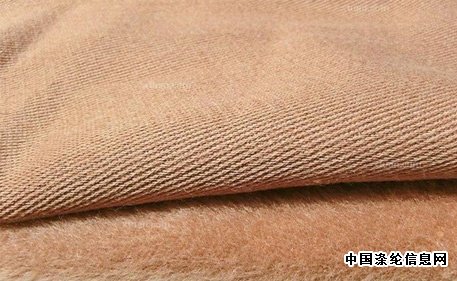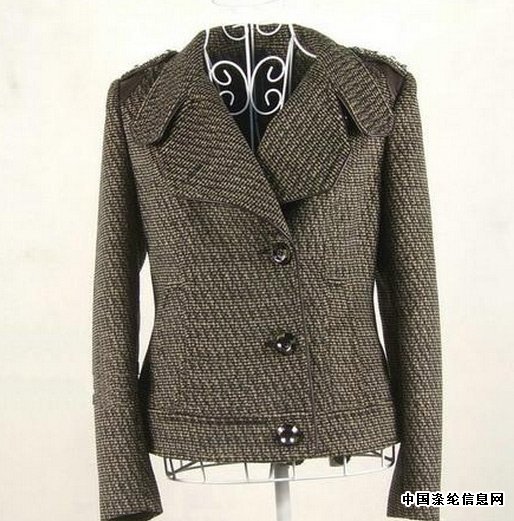What kind of fabric is polyester fiber and cotton?
In life, we are inseparable from eating, dressing, and sleeping every day. People must deal with fabric products at any time. So, do you know what fabric is polyester? Let's take a look. First, what fabric is polyester fiber? A synthetic fiber obtained by spinning a polyester obtained by polycondensing an organic dibasic acid and a diol. It is commonly known as polyester, which is widely used in apparel fabrics. Polyester has excellent wrinkle resistance, elasticity and dimensional stability, good insulation performance and wide application. It is suitable for men, women and children. Polyester fiber has high strength and elastic recovery, so it is durable, wrinkle-free and non-iron. Its light resistance is better. In addition to its poorer than acrylic fiber, its lightfastness is better than that of natural fiber fabrics, especially the light resistance behind glass is very good, almost the same as acrylic fiber. In addition, the polyester fabric is resistant to various chemicals, and the acid and alkali are not damaged to a large extent, and at the same time, it is not afraid of mold and is not afraid of insects. Polyester fiber sun fabrics are still popular on the market. Such fabrics have many excellent features such as sunshade, light transmission, ventilation, heat insulation, UV protection, fire prevention, moisture resistance and easy cleaning. They are a very good fabric. In the clothing manufacturing is very popular with modern people. Viscose fiber, a major variety of man-made fibers. The alkali cellulose is alkalized by natural cellulose, and then reacted with carbon disulfide to form cellulose xanthate. The viscous solution obtained by dissolving in dilute alkali solution is called viscose, and the viscose is wet-spun and a series of After the treatment process, the viscose fiber is formed. Viscian fiber is the full name of viscose fiber. It is further divided into viscose filaments and viscose staple fibers. Viscose - also known as rayon, ice silk. After 2000, a new high-grade new variety called Tencel and bamboo fiber appeared in the viscose fiber. Viscose is a cellulose fiber produced from cotton or other natural fibers. Among the 12 main textile fibers, the moisture content of the viscose fiber is most in line with the physiological requirements of human skin, and has the characteristics of smooth, cool, breathable, antistatic, and dyeing. The basic composition of viscose fiber is cellulose (C6H10O5) no ordinary viscose fiber has a zigzag-shaped core structure in cross section, and the longitudinal direction is straight and grooved. The fiber-rich core-free structure has a circular cross section. Viscose fiber has good hygroscopicity, and under normal atmospheric conditions, the moisture regain rate is about 13%. Significantly swelled after moisture absorption, the diameter increased by up to 50%, so the fabric feels hard after the water is launched, and the shrinkage rate is large. The breaking strength of ordinary viscose fiber is smaller than that of cotton, which is about 1.6~2.7cN/dtex; the elongation at break is larger than that of cotton, which is 16%~22%; the wet strength drops more, about 50% of dry strength, wet stretch The increase is about 50%. The modulus is lower than that of cotton, and it is easily deformed under a small load, and the elastic recovery property is poor, so the fabric is easily elongated and the dimensional stability is poor. The strength of the rich fiber, especially the wet strength, is higher than that of the ordinary adhesive, the elongation at break is small, and the dimensional stability is good. Ordinary viscose has poor wear resistance, while rich fiber has improved. The chemical composition of viscose fiber is similar to that of cotton, so it is more resistant to alkali than acid, but alkali and acid resistance are worse than cotton. Rich fiber has good alkali and acid resistance. Similarly, the viscose fiber has similar dyeing properties to cotton, and the dyeing chromatogram is complete and the dyeing performance is good. In addition, the thermal properties of viscose fiber are similar to those of cotton, and the density is close to cotton of 1.50~1.52g/cm3. The hydroxyl group of the macromolecule of cellulose is liable to undergo various chemical reactions. Therefore, the viscose fiber can be modified by grafting or the like to improve the properties of the viscose fiber and to produce various special-purpose fibers. Ordinary viscose fiber has good hygroscopicity, is easy to dye, is not easy to generate static electricity, and has good spinnability. The short fibers can be purely spun or blended with other textile fibers. The fabric is soft, smooth, breathable, comfortable to wear, bright in color after dyeing, and good in color fastness. Suitable for making underwear, outerwear and various decorative items. The filament fabric is light and thin, and can be woven into the quilt and decorative fabric in addition to the fabric. Disadvantages of such viscose fibers are poor fastness, low wet modulus, high shrinkage and easy deformation, and poor elasticity and wear resistance. Second, polyester fiber and cotton which is better Some people think that cotton is good, and some people think that polyester fiber is environmentally friendly. The same is the material woven into the fabric, made of different things, the effect is not the same. Polyester fiber is often called polyester. It is often used as a fabric for sports pants. However, polyester is not very breathable and easy to feel stuffy. It is not a high-grade fabric. Today, the world is taking an environmentally friendly route. Autumn and winter fabrics are also commonly used, but it is not easy to make underwear. Production costs are lower than cotton. Polyester is acid resistant. Neutral or acidic detergents are used for cleaning, and alkaline detergents accelerate the aging of the fabric. In addition, polyester fiber fabrics generally do not require ironing, and low temperature steam can be used. Because no matter how many times ironing and cotton, it wrinkles when it meets water. Cotton and polyester are different, and cotton is alkali resistant. It is good to use ordinary washing powder when cleaning. The medium temperature steam is light and hot. Cotton is breathable, moisture wicking, and children's clothing fabrics are often chosen. Although the advantages and disadvantages of cotton and polyester fiber are different, in order to compensate for the shortcomings of each and every advantage, the two materials will be combined in a certain proportion and used to make up for the long-term shortcomings to achieve the desired effect in daily life. The above is what fabrics of polyester fiber introduced by Xiaobian, I hope to help you. Please indicate the source. PE Breathable Film,PE Lamination Film,PE Casting Embossed Film,Breathable Polyethylene Film FSPG HI-TECH CO., LTD. , https://www.fspgplastic.com
What is the fabric of polyester fiber? 
